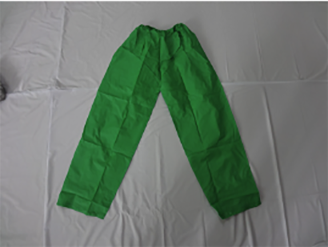Aug . 13, 2024 19:46 Back to list
Top Manufacturers of PVC Raincoats for Durable and Weather-Resistant Rain Gear Solutions
The Growth of PVC Raincoat Factories A Comprehensive Overview
In recent years, the demand for rainwear has escalated significantly, driven by changing weather patterns and a growing awareness of the need for protection against the elements. PVC raincoats have become a popular choice due to their durability, affordability, and effectiveness in keeping the wearer dry. With this rise in popularity, the establishment of PVC raincoat factories has surged across the globe, particularly in regions with a high frequency of rainfall.
Why PVC?
Polyvinyl chloride (PVC) is a versatile plastic widely used in various industries. In the apparel sector, PVC is valued for its waterproof properties, ease of manufacturing, and low cost compared to other materials like rubber or more advanced textiles. PVC raincoats provide an excellent barrier against water while remaining lightweight and comfortable to wear. Moreover, they are easy to clean, making them ideal for outdoor activities and urban wear alike.
The Rise of Factories
The establishment of PVC raincoat factories is both a response to consumer demand and an opportunity for economic growth in several countries. Countries with abundant rainfall experience seasonal spikes in raincoat purchases, prompting local businesses to cater to this market. As a result, many manufacturers have begun setting up specialized factories aimed at producing high-quality PVC raincoats in various styles and sizes.
In countries like China, India, and Bangladesh, the proliferation of PVC raincoat factories has not only created job opportunities but has also resulted in the development of better production techniques. These factories are often equipped with advanced machinery capable of producing high volumes of raincoats within a short timeframe. The use of eco-friendly PVC versions is gaining traction as more consumers become environmentally conscious, urging factories to adapt their practices and offer sustainable options.
pvc raincoat factories

Production Process
The production of PVC raincoats involves several steps. Initially, raw PVC is extruded into sheets, which are then cut and shaped into the desired dimensions. Factories often employ high-frequency welding or thermal bonding techniques to seal seams and ensure waterproof integrity. After the primary construction, the raincoats undergo quality checks to ensure they meet industry standards. This rigorous process assures consumers that they are receiving a product that is both durable and effective at providing protection from rain.
Market Trends
As the market for PVC raincoats expands, manufacturers are innovating to stay competitive. There is an increasing trend towards customization, with factories allowing consumers to select colors, patterns, and fittings to match their individual style. Additionally, factories are exploring collaborations with designers and brands to create exclusive lines of rainwear, thereby expanding their reach into fashion-forward segments of the market.
Rapid urbanization and lifestyle changes have also influenced the design of PVC raincoats. Modern raincoats are now being designed with features like breathability, packability, and lightweight materials, making them more appealing to consumers who prioritize style alongside functionality. As the global climate continues to change, with unpredictable weather conditions, the adaptability and availability of PVC raincoats will likely play a crucial role in how people equip themselves for the rainy seasons ahead.
Conclusion
The emergence of PVC raincoat factories signifies a blend of consumer demand, technological advancement, and economic opportunity. As factories continue to innovate and expand, they not only meet the needs of a wetter world but also contribute to local economies. The ongoing evolution in design and production techniques is paving the way for a future where PVC raincoats remain a staple for anyone looking to stay dry, comfortable, and stylish in inclement weather. Whether for casual wear, outdoor adventures, or urban life, PVC raincoats are proving to be an essential part of modern apparel.
-
Heavy Duty Post Mortem Bag - 36x90, Double Zipper
NewsAug.15,2025
-
Durable PVC Vinyl Work Apron - Waterproof for Workshop
NewsAug.14,2025
-
Durable PVC/Vinyl Work Apron - Waterproof Workshop Protection
NewsAug.13,2025
-
Leakproof White Cadaver Bag 36x90 with Perimeter Zipper
NewsAug.12,2025
-
Kids' Waterproof Raincoat - 100% PVC/PEVA with Hoodie
NewsAug.11,2025
-
Kid Apron without Sleeves: PEVA/PVC, Custom Designs
NewsAug.10,2025





